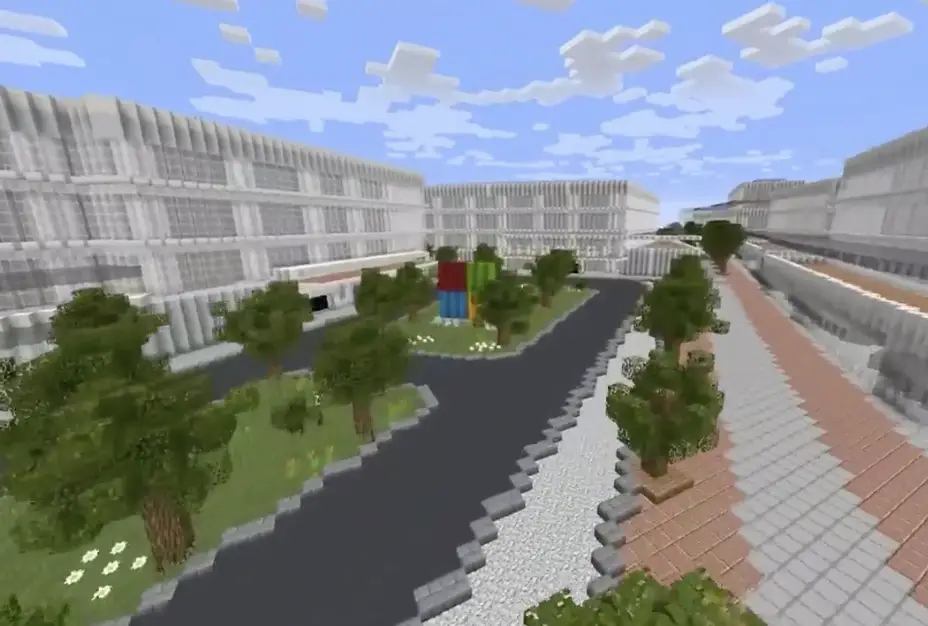Recently, Microsoft has begun drawing up blueprints to expand their new, 500-acre headquarters in Redmond, Washington, which they expect to finish in 2022. However, instead of opting for a more traditional layout for their new campus, the company is looking to one of their most popular games, “Minecraft,” for architectural inspiration.
In “Minecraft,” whether in the single or multiplayer setting, users create various versions of livelihoods in different worlds, building objects such as homes, buildings, museums, farms and fictional structures like sky fortresses.
However, the level of creativity these designs can exhibit has caught the attention of people far removed from the world of video games. In response to its users’ inventiveness, “Minecraft” began creating modifications that gave players the leeway to create a greater variety of universes and lifestyles. These tweaks have given “Minecraft” fans a deeper challenge to be creative and implement new ideas in the their gaming world.
As you might expect, these player-created communities have generated a massive fandom within the “Minecraft” universe. And, in an effort to capitalize on this organic surge of interest, Microsoft saw an opportunity to create something authentic based off their own video game.
According to Jordan Novet, of CNBC, “Riku Pentikainen, who until recently was director of global workplace strategies inside Microsoft’s real estate and facilities group, saw his son playing Minecraft earlier this year and was intrigued by how the game could help the company with its transition. Employees could learn and get excited about the remodeling long before they could check it out on foot, and in a more dynamic way than what was available through typical renderings.”
Mojang, the company that created “Minecraft,” was purchased by Microsoft four years ago for $2.5 billion, and earlier this year, Microsoft promoted “Minecraft” boss Matt Booty. Booty’s prescient decision to sell to Microsoft at the right time has benefitted both parties immensely, as the game remains one of Microsoft’s best investments. In return, the company named Booty head of the company’s games studios.
Still, while the company certainly understood the cultural phenomenon that was “Minecraft,” they likely never expected to use the video game for anything in the real world. Microsoft, however, has long prided itself on its willingness to experiment with new ideas, so their decision to incorporate something new into their campus-creation process wasn’t wholly unexpected.
To channel this “Minecraft” creativity into their new headquarters, the company hired Blockworks, a business that uses “Minecraft” to create realistic projects, to help them formulate possible campus aesthetics. In addition to Microsoft, Blockworks has collaborated with companies such as Disney, Warner Bros. and the Museum of London. Using the game as an architectural compass gives the people of Blockworks the ability to quickly construct and propose ideas, an ability that even non-gamers can see the value in.
According to CNBC, “The speed and ease of use more than made up for those deficiencies. It might take just 10 minutes to wrap up a single building. ‘Minecraft’ also appeals to a broader audience of younger people, who might not know how to use computer-aided design, or CAD, programs, which require extensive training and aren’t as collaborative.”
In gambling on this idea, Microsoft both reaffirms its commitment to innovation and flexes its loyalty to Redmond, both of which are especially valuable at the moment. As the New Yorker and other media have found, the inventiveness at the core of the tech industry has stagnated in recent years, so Microsoft’s adventurous experiment is an unmistakable signal that it has no plans of slowing its envelope pushing.
Second, at a time in which Amazon’s HQ2 debacle is grabbing headlines across the nation, Microsoft’s decision to stay in its Washington home shows a steadfastness that seems to be waning in Silicon Valley. Unlike Amazon, who made cities across the country beg and dance for their business, Microsoft feels less like a manipulative mega-company and more like a hometown hero. Plus, with the money they save on relocating, the company can afford to do a lot more to their new campus than if they had moved wholesale.
At the end of the day, Microsoft gets to be creative while having fun, a major aspect of business that other companies will begin to look into after seeing the money saving success that it has brought Microsoft.
















